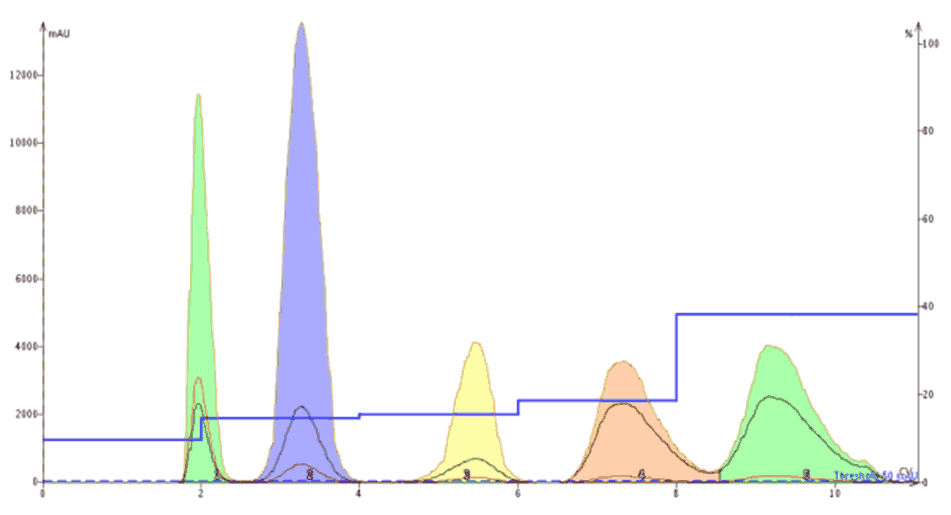Up to six compounds can be easily separated with an automated step-gradient optimizer embedded in modern flash chromatography systems.
For many years, flash chromatography has been performed using isocratic elution, linear gradients, or a combination. Elution methods are often based on previous experience, gut-feel, or generic default gradients, while sample loading usually follows the 1% rule (1% of the cartridge media mass) resulting in less than optimal purifications.
A patented TLC to linear gradient algorithm found in Isolera™ Spektra flash systems uses TLC data to create a linear gradient and estimate sample load for up to three compounds. But things just got even better. New software allows optimizing the purification for up to six compounds using only two TLC separations to create a step gradient. Results from a proof of concept study show that automated TLC to step gradient reduces purification costs in several ways:
- -Increased sample loading: smaller or fewer cartridges
- -Less time needed to purify
- -Less solvent consumed reducing purification costs

Actual step gradient purification of 200 mg of the 5-component crude sample. The separation required only 11 column volumes or 8 minutes to complete with better overall separation than the generic linear gradient.
To learn more about step and linear gradients, check out the blog below:

 Organic Workflow
Organic Workflow Peptide Workflow
Peptide Workflow Scale-Up Flash Purification
Scale-Up Flash Purification  Sample Preparation
Sample Preparation Biomolecule Purification
Biomolecule Purification Oligo synthesis
Oligo synthesis Scavengers and Reagents
Scavengers and Reagents Service & Support
Service & Support Accessories & Spare parts
Accessories & Spare parts Investors
Investors Reports & News
Reports & News The Share
The Share Corporate Governance
Corporate Governance Calendar
Calendar Sustainability
Sustainability Our Offering
Our Offering Our History
Our History Our Locations
Our Locations Leadership
Leadership